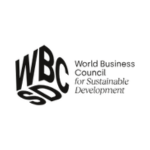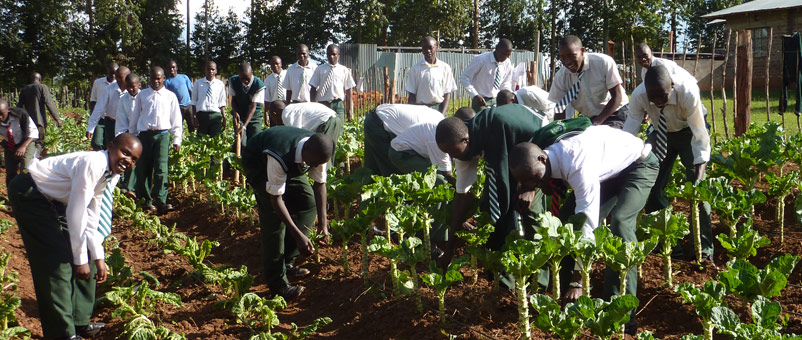- Investment from the agrifood sector of up to USD $205 billion per year between 2025 and 2030 could achieve up to 9 gigatons of CO2 equivalent of mitigation annually by 2030, according to new reports.
- While significant, these costs are manageable as they equate to less than 2 per cent of total projected food sector revenues and come with associated co-benefits including potential additional returns of up to USD $190 billion per year by 2030 and savings of up to USD $30 billion per year from on-farm solutions.
- The burden of implementing these mitigation solutions does not fall equitably across value chains, with costs landing most heavily on farmers, who are the least able to pay. To deliver on sustainability commitments, companies must reassess how they partner with actors in the value chain and work with policymakers and financial institutions to alleviate some costs and risks that farmers face.
The agrifood sector must play a crucial role in keeping 1.5C within reach by urgently cutting greenhouse gas emissions and scaling up nature protection solutions through their value chains, according to a series of reports launching today from the Food and Land Use Coalition, the World Business Council for Sustainable Development and We Mean Business Coalition.
The Future Fit Food and Agriculture report series argues for the adoption of ambitious sustainability action plans by agrifood companies and sector-wide investments of approximately USD $205 billion per year between 2025 and 2030 to unlock up to 9 gigatons of CO2 equivalent of mitigation annually by 2030.
The first report aims to help agrifood companies understand the implications of current and emerging voluntary standards and the expected trajectory of regulation for climate and nature. The second report unpacks the financial costs and benefits of implementing mitigation solutions to tackle agriculture and land-use change emissions in company value chains.
The Agrifood Sector Requires Urgent Action
The case for urgent action is clear: agricultural production emissions must decrease approximately 30 per cent by 2030 to align with the Paris Agreement’s goal to limit global warming to 1.5°C by 2050.
The climate strategies of most food and agriculture companies, from input providers and food producers through to traders and multinational companies, are not comprehensive or ambitious enough. According to the World Benchmarking Alliance, 165 of the 350 most influential food and agriculture companies are yet to disclose any Scope 3 commitments.
In light of these challenges, policymakers are increasingly mandating action on climate and nature from companies, using voluntary standards as the basis for new sustainability legislation.
Morgan Gillespy, Executive Director, Food and Land Use Coalition, commented: ”Food and agriculture companies are facing a choice. Those striving to deliver ambitious sustainability strategies today, in close collaboration with farmers in their supply chain, will likely enjoy lower costs, stronger returns and greater agility in the face of advancing sustainability regulation. Those that stall won’t just fail to deliver on climate and nature commitments, they will face higher costs and higher supply chain risks in the long term.”
Benefits of Investing up to $205 billion per year
Agricultural production and land-use change emissions in company value chains account for nearly half of total food systems emissions (an estimated 10 GtCO2e of a total 21 GtCO2e in 2030).
Analysis from the Future Fit Food and Agriculture reports series estimates that to mitigate up to 90 per cent of their annual agricultural and land-use change emissions by 2030, food and agriculture companies should expect sector-wide costs of approximately USD $205 billion per year (2025-2030).
While significant, such investments are manageable for the sector as a whole and have associated co-benefits:
- USD $205billion per year represents less than 2 per cent of the sector’s projected USD $13 trillion average annual revenues for 2025-2030.
- One-fifth of the USD $205 billion per year are investments in new and growing markets. These investments, estimated to be USD $40 billion per year (average annual from 2025-2030), could lead to potential additional returns of up to US$D 190 billion per year by 2030.
- Some on-farm solutions provide savings and/or increased yields worth up to USD $30 billion per year.
- Other associated co-benefits include increased supply-chain resilience and delivery on other sustainability commitments, such as nature targets;
The burden of implementing mitigation solutions should be shared more equitably across value chains. In general, the more upstream a value chain participant is, the lower its margins tend to be — farmers in particular tend to have the lowest margins of any value chain participants. It follows that companies across the value chain must work together to determine transition economics and arrive at a transparent, fair and equitable distribution of costs and benefits. They also stand to benefit from making more unified policy asks to government on what it can do to alleviate the costs for all and enable acceleration.
The second Future Fit Food and Agriculture report shows that the costs for mitigation, as a percentage of revenues, change very significantly depending on where actors sit along the value chain. The report shares three examples to illustrate this point, including the case of a Brazilian beef farmer, for whom mitigating 30 per cent of their agricultural production emissions could cost as much as 17 per cent of their revenues – an unrealistic expectation given farmers typically achieve profit margins of less than 20 per cent.
Overcoming inequity requires food and agriculture companies to reassess how they partner with other actors in the value chain, particularly farmers, and how they engage with policymakers to incentivise and accelerate action. Some companies are already leading the way on this, with several working together through the likes of WBCSD to identify where they can problem solve collectively, raise ambition levels, drive harmonisation and accelerate the implementation of critical solutions.
This press release was originally published on The Food and Land Use Coalition and has been revised to suit Farming First’s editorial guidelines.





